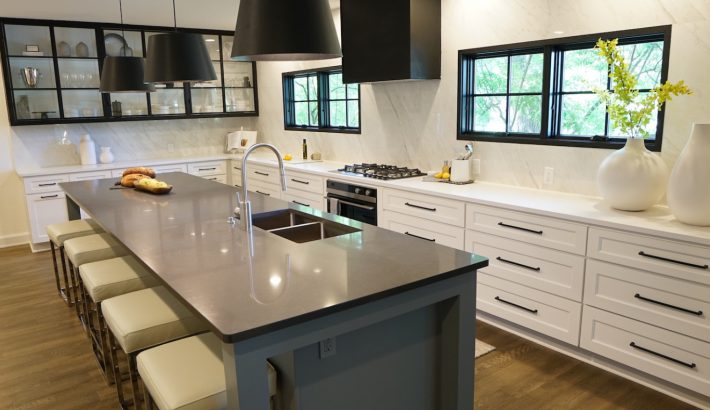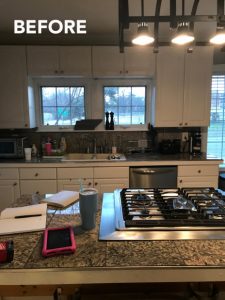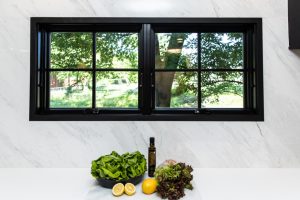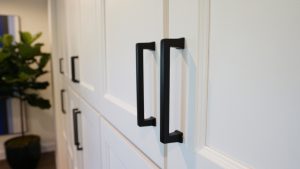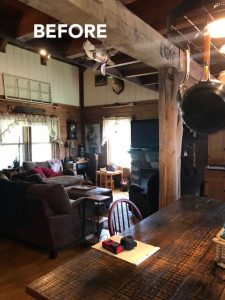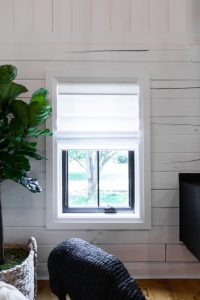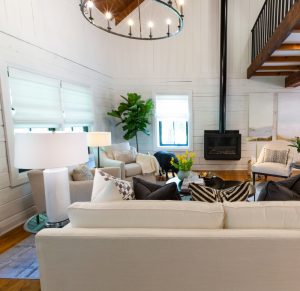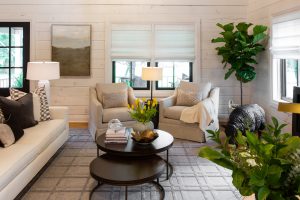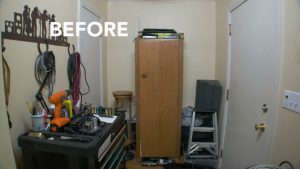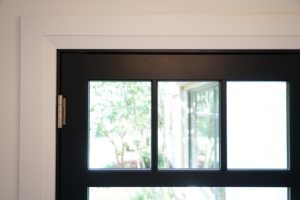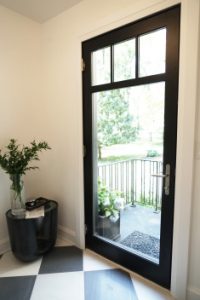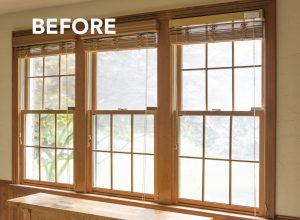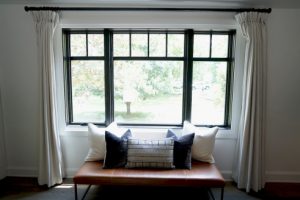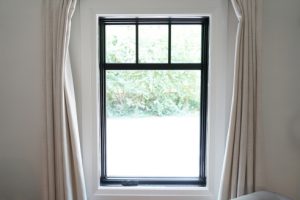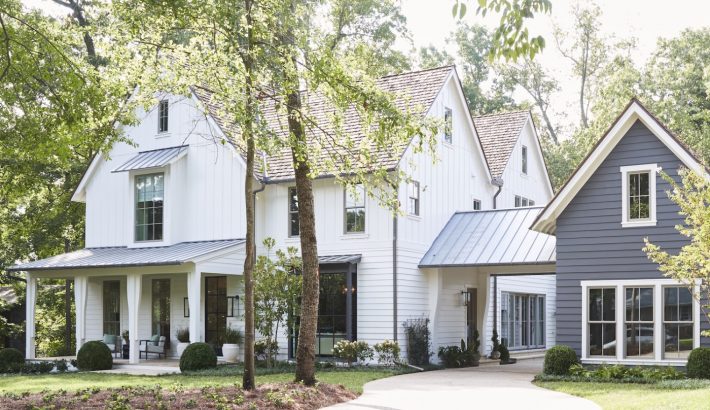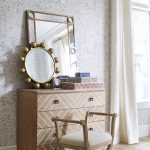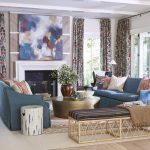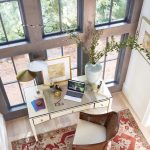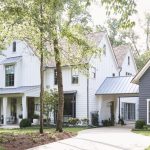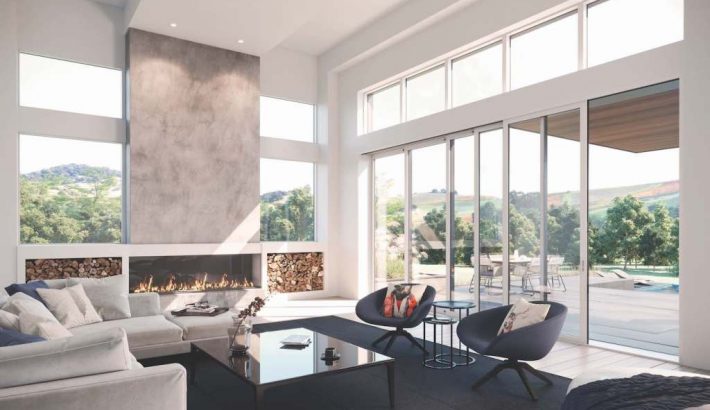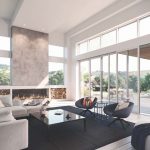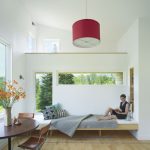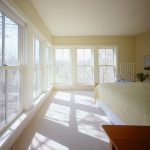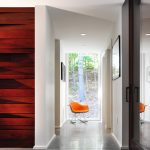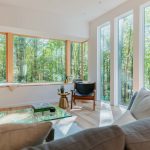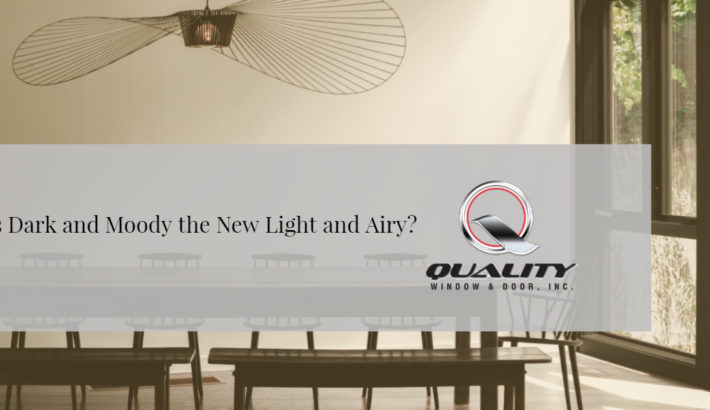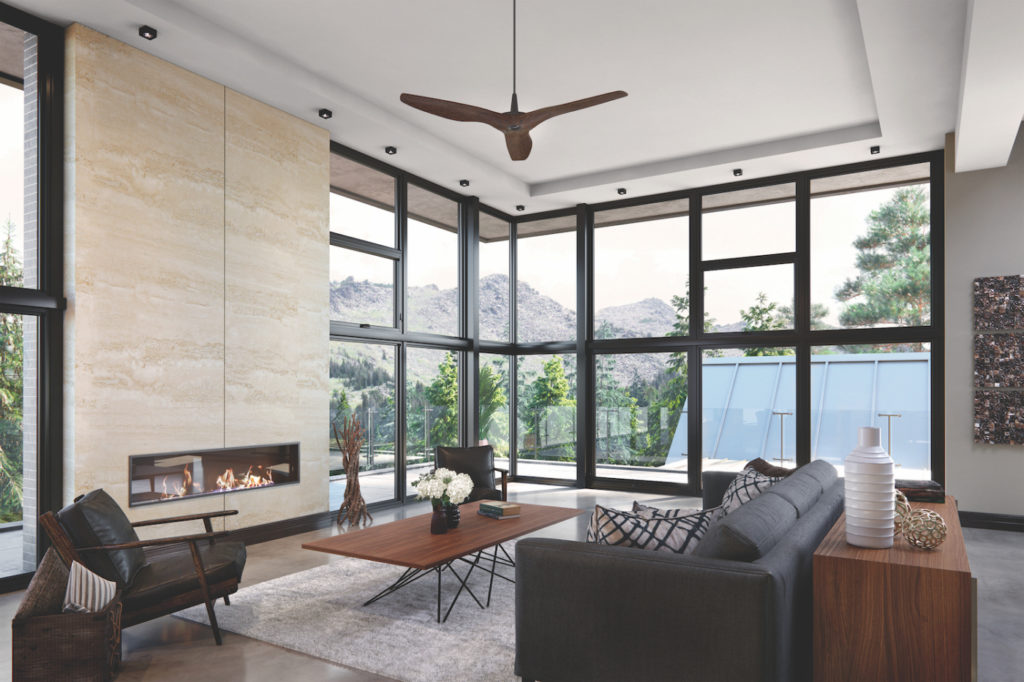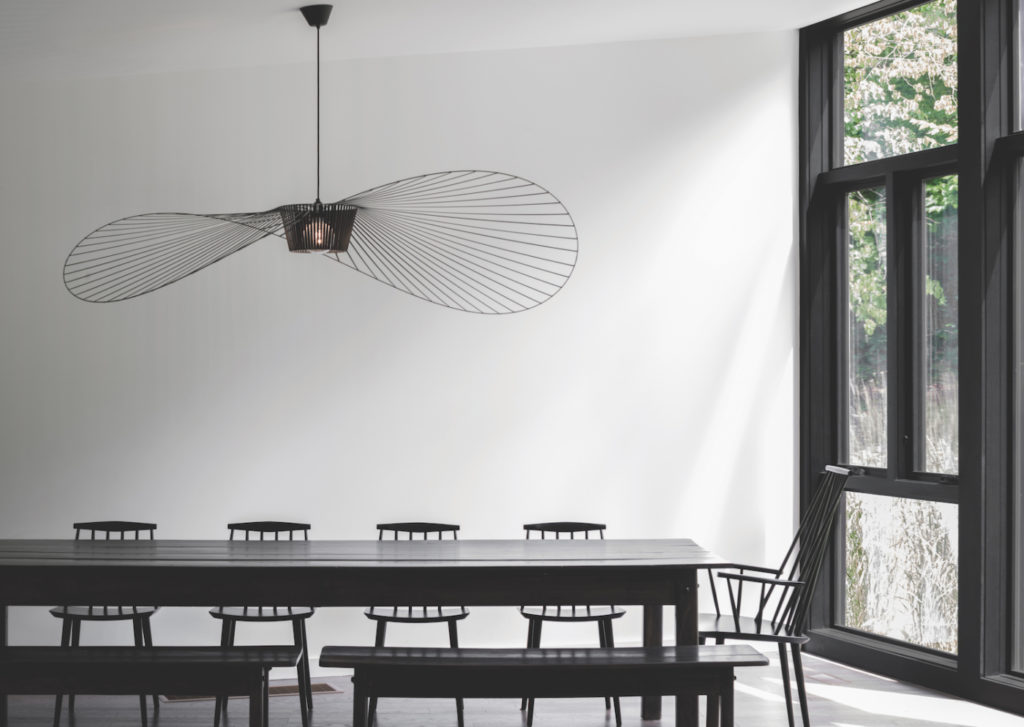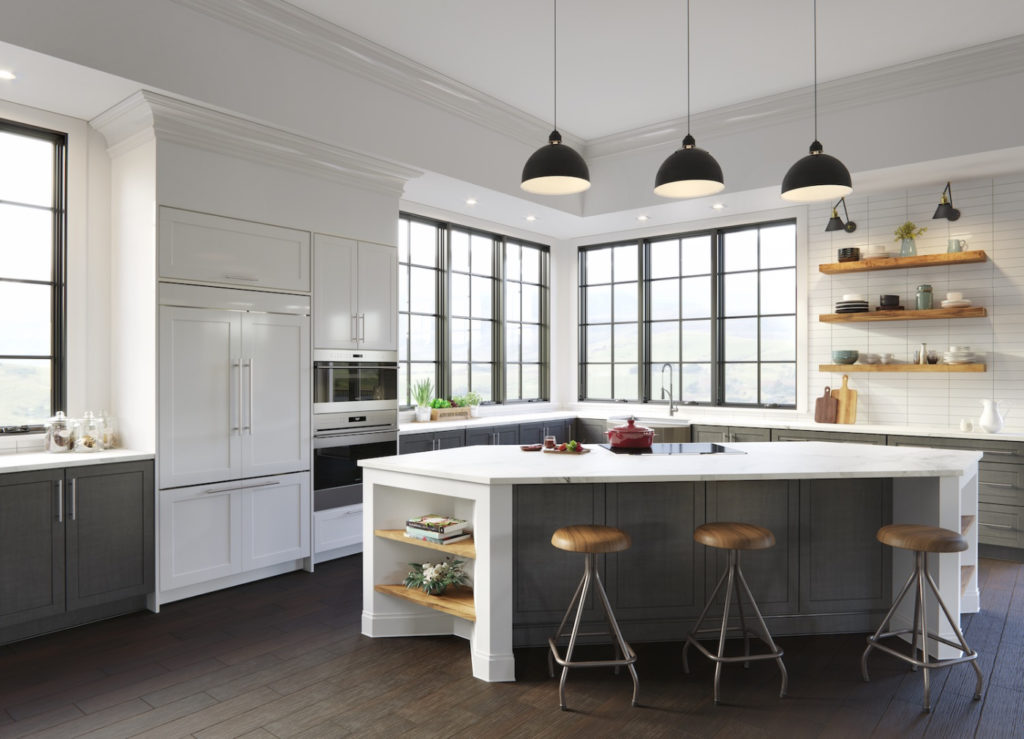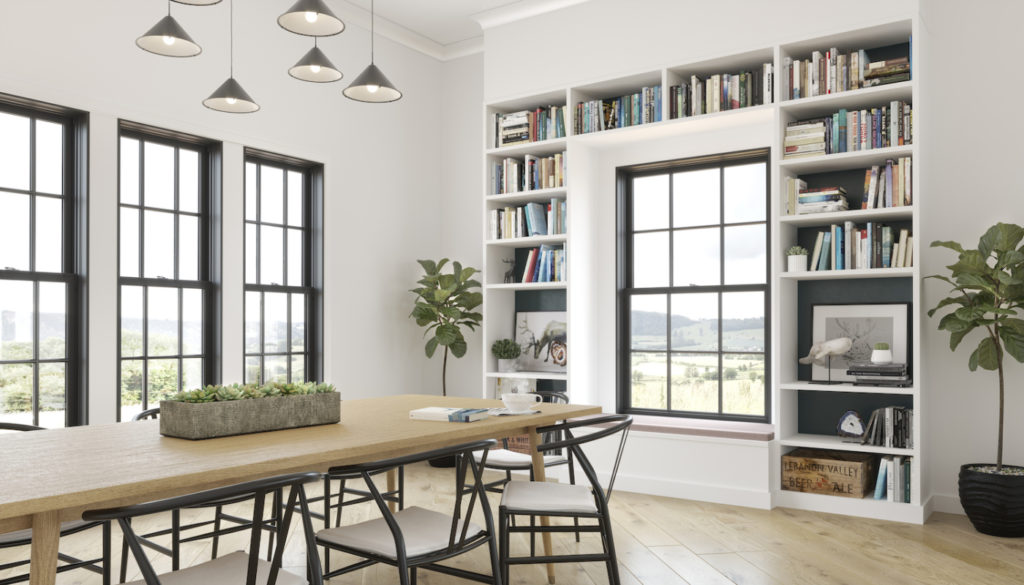How harnessing light can lead to happier and healthier homes
Today, people are looking for ways to live healthier and happier, and they expect their homes to be part of that quest. We often look to designers and architects to help create positive home environments, and these experts are increasingly considering light as an important tool to boost happiness.
Research indicates that increased exposure to light makes people more productive and improves their sense of well-being, therefore improving overall wellness. [1] It’s no surprise, then, that homeowners and architects alike are exploring ways to bring more natural light into homes.
Biophilic design: a return to evolutionary psychology
To understand the impact of light in a home, it helps to explore the concept of biophilic design. Biophilic design incorporates evolutionary psychology in the design of spaces. We’ve always sought certain elements to feel safe, secure, and in the most optimal emotional state; ingrained in us from the earliest days of days of living on terrain like meadows and the savanna. [2]
Gazing outside inspires a direct connection to the healthy, natural state that people experienced when they spent most of their time outdoors. “The feeling of being in nature stays with you, even while inside looking at trees, a garden, or patio,” said Manny Gonzalez, FAIA, LEED AP, principal and board of directors at KTGY, a Los Angeles-based architecture firm.
“Your mind may not realize it, but your body wants that feeling of getting back to nature.”
Manny Gonzalez, FAIA, LEED AP
Exposure to light makes us feel better
The concept of biophilia comes to life when we consider the body’s response to daylight. Daylight affects the health of our circadian rhythms, also known as our internal sleep/wake cycle. (3) These rhythms are primarily regulated by light and darkness in an environment and are recognized by a third type of receptor in our eyes. [4]
The same idea is at work in our homes. The more exposure to the outdoors and light, the better we feel. “All of these things tie into healthy living, the ability to get the sleep that you need, the wellness everyone is trying to get,” said Gonzalez.
“Sunshine suits”
Conversely, research has shown that a lack of exposure to light can actually make us sick, and some countries have already begun addressing their citizens’ right to light. In Japan, skyscrapers and intense urban density led to the concept of “nissho-ken,” which translates to “a right to sunlight.” After a string of “sunshine suits,” more than 300 Japanese cities adopted “sunshine hour codes,” specifying penalties that developers must pay for casting shadows.
The Japanese were early to realize the impact of sunlight on health and happiness, crucial when you consider that we spend up to 97% of our time indoors.[5] All the more reason to bring light into the home, since we may not get outside much to experience it.
Light considerations in design
What exactly does it mean to design around natural light? “Being able to control the lighting, whether it’s the natural light that you have, the UV rays that you get through a window, visibility, and window coverings—all those things start tying together when you’re creating the proper environment,” said Gonzalez.
Window styles, configurations, and glazing can all work together to create a functional, healthy, and inspiring light-filled home. Architects also take siting into account—understanding the land and placing windows for maximum natural light. Choosing a design style that prioritizes large expanses of glass and unobstructed views, like in Marvin’s new Modern product line can also offer the opportunity to design with light as a focal point.
Modern homes tend to have more windows and narrower frames, increasing the capacity for light to pass through and offering better views. When Marvin created its new Modern product line, it offered homeowners an opportunity to embrace the principles of modern design, a concept that is closely intertwined with exposure to light.
“Our goal was to create a designed experience that offers minimal sightlines and large expanses of glass, providing seamless, clutter-free visuals that make engaging with the outside world easy. This enables homeowners to achieve what they seek in their home—connection, restoration, and freeness.”
Christine Marvin, Director of Corporate Strategy + Design
Explore the Modern Product Line
Emotional and physical benefits
When a home’s design embraces and enhances the benefits of natural sunlight through deliberate choices that strengthen our connection to the outdoors, those much-desired feelings of well-being are a natural result.
“If you do a good job as an architect, the resident won’t even know that they’re experiencing biophilic design,” said Gonzalez. “They don’t even think about it—it just feels good.”
[1] NeoCon June 2018 seminar: “Applying Wellness Principles to Residential Construction”
[2] “The Economics of Biophilia,” Bill Browning, Terrapin Bright Green
[3] “Your Body’s Internal Clock And How It Affects Your Overall Health,” The Atlantic, March 2012
[4] National Institute of General Medical Sciences: Circadian Rhythms
[5] NeoCon June 2018 seminar: “Applying Wellness Principles to Residential Construction”

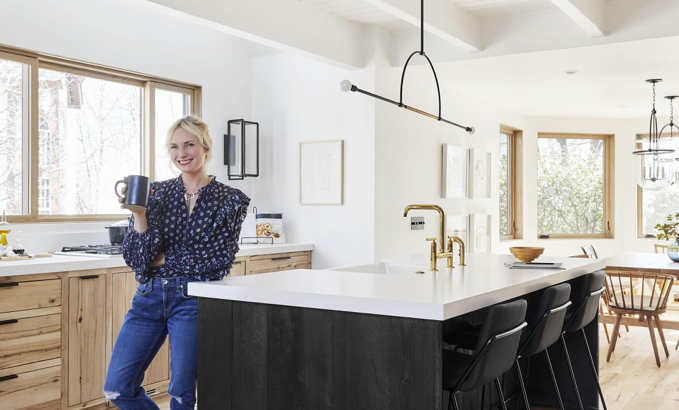
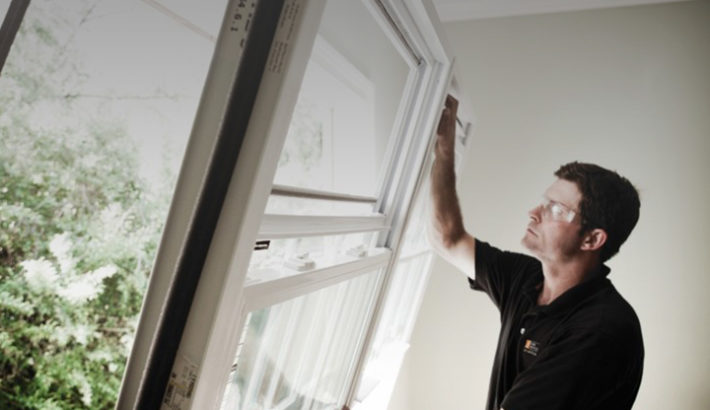
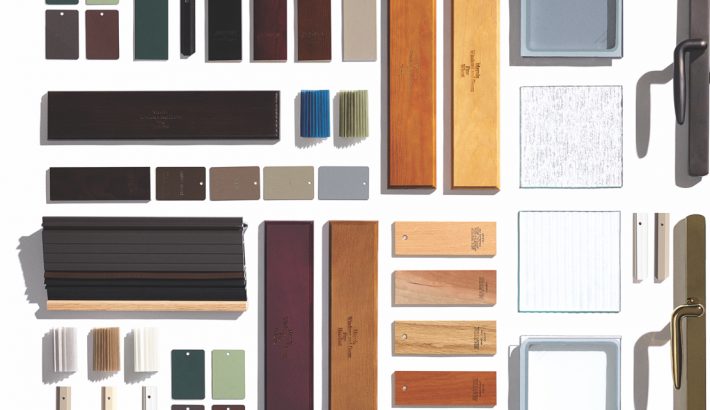
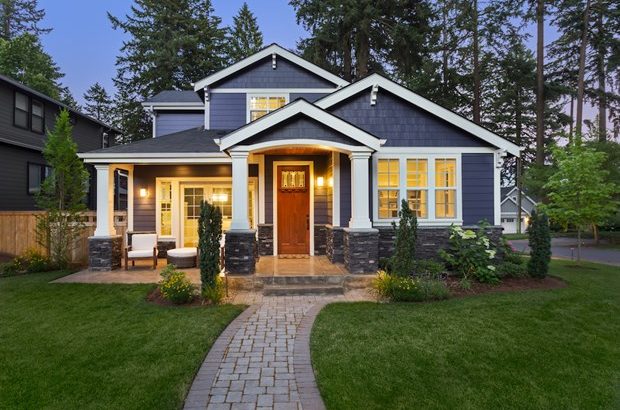
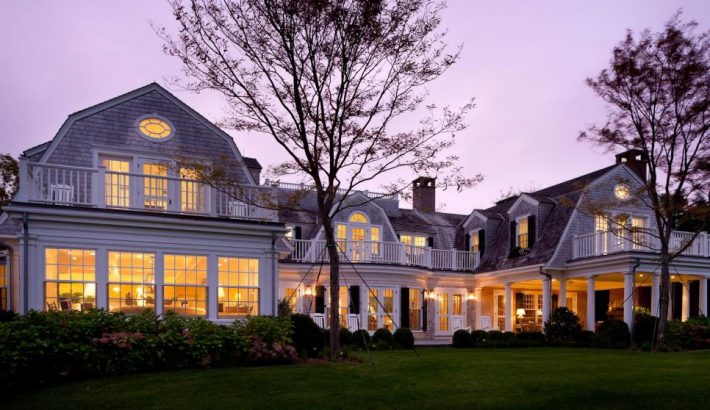
 Coastal Style This New England coastal home by Patrick Ahearn Architect LLC honors architectural history while maximizing water views with these expansive windows made up of many small “lights” (individual window segments). From the outside, the home communicates historically accurate New England coastal architecture.
Coastal Style This New England coastal home by Patrick Ahearn Architect LLC honors architectural history while maximizing water views with these expansive windows made up of many small “lights” (individual window segments). From the outside, the home communicates historically accurate New England coastal architecture.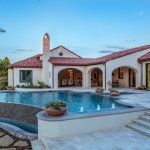 Santa Barbara Style Influenced by Spanish and Moorish architecture, this popular California style includes lots of arches and curved windows. Turquoise windows — though unconventional — were exactly the right choice for this Santa Barbara-style house by Mark Molthan. Steel frame windows balance out the bright color with their neutral tones and give a slightly contemporary feel to the home.
Santa Barbara Style Influenced by Spanish and Moorish architecture, this popular California style includes lots of arches and curved windows. Turquoise windows — though unconventional — were exactly the right choice for this Santa Barbara-style house by Mark Molthan. Steel frame windows balance out the bright color with their neutral tones and give a slightly contemporary feel to the home.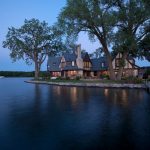 Tudor Style Architect Jeff Murphy chose casement windows for this home — the historically accurate selection for the Tudor style of architecture, which first enjoyed popularity from 1485 to 1625. “In medieval times,” Murphy explains, “there was no glass in the openings — until later in the period, where glass was placed into the simple square (or often times diagonal) openings.”
Tudor Style Architect Jeff Murphy chose casement windows for this home — the historically accurate selection for the Tudor style of architecture, which first enjoyed popularity from 1485 to 1625. “In medieval times,” Murphy explains, “there was no glass in the openings — until later in the period, where glass was placed into the simple square (or often times diagonal) openings.”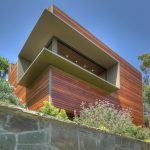 Modern Style For a writer’s studio in a modern home, architect John Bertram envisioned a seamless, unobstructed connection between the view and the writing desk, and the goal was to eliminate any evidence of windows at all — including the frames themselves. The window’s unique style allows the homeowners to open the kitchen to the outside bar to create the look of an entirely open kitchen.
Modern Style For a writer’s studio in a modern home, architect John Bertram envisioned a seamless, unobstructed connection between the view and the writing desk, and the goal was to eliminate any evidence of windows at all — including the frames themselves. The window’s unique style allows the homeowners to open the kitchen to the outside bar to create the look of an entirely open kitchen. Contemporary Style FINNE Architects chose windows and oversized sliding glass doors of black anodized aluminum for this contemporary home. “I like to call the main living space ‘a large front porch,’ because the windows and large sliding glass doors create a feeling of being outdoors,” says Nils Finne. The interior window trim is Douglas fir, which gives warmth to the living space.
Contemporary Style FINNE Architects chose windows and oversized sliding glass doors of black anodized aluminum for this contemporary home. “I like to call the main living space ‘a large front porch,’ because the windows and large sliding glass doors create a feeling of being outdoors,” says Nils Finne. The interior window trim is Douglas fir, which gives warmth to the living space.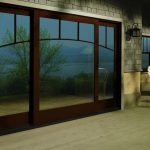 Craftsman Style Craftsman bungalow-style homes developed from the British Arts & Crafts movement, featuring double-hung or casement windows like the Andersen Windows A-Series Frenchwood Gliding Patio Doors here. In Craftsman-style homes, the exterior trim traditionally contrasts with the window frame color, and the windows include grille patterns that create vertical proportions.
Craftsman Style Craftsman bungalow-style homes developed from the British Arts & Crafts movement, featuring double-hung or casement windows like the Andersen Windows A-Series Frenchwood Gliding Patio Doors here. In Craftsman-style homes, the exterior trim traditionally contrasts with the window frame color, and the windows include grille patterns that create vertical proportions.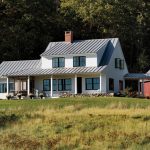 Farmhouse Style Influenced by Colonial and Victorian architecture, the uniquely American Farmhouse home style looks just right with tall, narrow, double-hung windows, bay windows and window groupings, and 2-over-2 grille patterns. Black exterior window frames add striking contrast for curb appeal… … while white interior window frames visually expand the space by blending into the wall color.
Farmhouse Style Influenced by Colonial and Victorian architecture, the uniquely American Farmhouse home style looks just right with tall, narrow, double-hung windows, bay windows and window groupings, and 2-over-2 grille patterns. Black exterior window frames add striking contrast for curb appeal… … while white interior window frames visually expand the space by blending into the wall color.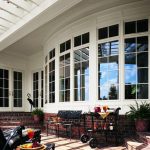 Georgian Style A variation on Colonial architecture, Georgian homes feature tall, double-hung windows, simple window combinations, and multiple divided lights with rectangular grilles. Fun fact: The reason Colonial architecture tends to feature windows with many small “lights” (individual panes) is that the British imposed high import taxes on large pieces of glass sent into the Colonies.
Georgian Style A variation on Colonial architecture, Georgian homes feature tall, double-hung windows, simple window combinations, and multiple divided lights with rectangular grilles. Fun fact: The reason Colonial architecture tends to feature windows with many small “lights” (individual panes) is that the British imposed high import taxes on large pieces of glass sent into the Colonies.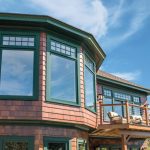 Shingle Style Andersen’s A-Series Transom Windows with Forest Green Exteriors and Specified Equal Light Grille Pattern add color and light to this Shingle-style home — a uniquely American look that traces its beginnings to the late 19th century.Shingle-style interiors borrowed heavily from the Arts & Crafts style, as seen in these windows’ height-to-width proportion of 2-to-1.
Shingle Style Andersen’s A-Series Transom Windows with Forest Green Exteriors and Specified Equal Light Grille Pattern add color and light to this Shingle-style home — a uniquely American look that traces its beginnings to the late 19th century.Shingle-style interiors borrowed heavily from the Arts & Crafts style, as seen in these windows’ height-to-width proportion of 2-to-1.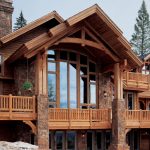 Rustic Style In a rustic setting with a fabulous view, the guideline for windows is often, “The bigger, the better.” These custom windows from Marvin take maximum advantage of the view — and echo the look of the surrounding trees with their rustic wood trim.
Rustic Style In a rustic setting with a fabulous view, the guideline for windows is often, “The bigger, the better.” These custom windows from Marvin take maximum advantage of the view — and echo the look of the surrounding trees with their rustic wood trim.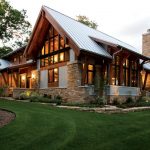 Transitional Style Perched happily at the intersection of modern and traditional styles, the transitional home often has tall window openings that are best filled with casement windows, like these from Marvin. Low-placed crank handles make it easy to open and close the windows, despite their soaring height. Marvin’s Ultimate Casements have a wash mode that allow homeowners to turn the exterior of the window towards the interior to wash from inside.
Transitional Style Perched happily at the intersection of modern and traditional styles, the transitional home often has tall window openings that are best filled with casement windows, like these from Marvin. Low-placed crank handles make it easy to open and close the windows, despite their soaring height. Marvin’s Ultimate Casements have a wash mode that allow homeowners to turn the exterior of the window towards the interior to wash from inside.